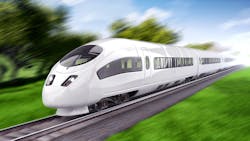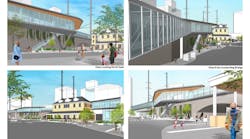AECOM released its "From Vision to Reality: a new high-speed rail playbook" report, which presents original quantitative and qualitative research conducted with 112 senior decision-makers involved in high-speed rail (HSR) projects globally.
The HSR report, which is part of AECOM’s ongoing Future of Infrastructure thought leadership series, investigates the latest industry trends and outlines best practices for the successful delivery of HSR systems around the world.
Research presented in the report found that economic growth, technology, adaptability and on-time completion prove the most critical success factors in the first year of HSR operation. In the five-to-ten-year period post launch, top success factors shift to passenger experience and adaptability while the impact of project delays becomes less important.
Success factors also varied widely by region:
- Europe’s primary success factors included a reduction in air/vehicle traffic, use of the latest technology and future adaptability.
- In North America, key success factors were regional economic growth, use of the latest technology and passenger experience.
- For the Asia and Pacific region, on-time completion, low environmental impact and social benefits comprised the top key success factors.
“Through our extensive experience guiding clients across all stages of HSR delivery, we are finding that the global push toward the energy transition is propelling significant interest in this low-carbon mode of transportation,” said Troy Rudd, AECOM’s chief executive officer. “With such unprecedented demand and new funding opportunities worldwide, we’re excited to present this first-of-its-kind playbook to provide a comprehensive view of best practices that can accelerate the growth of HSR globally.”
The report takes both a global and region-specific approach to a spectrum of key HSR topics, including passenger experience, economic and social benefits, emissions reductions, regulatory and political factors, land use and funding concerns. Data is presented over immediate and five-to-ten-year timeframes and is supported by interviews from leaders across major HSR organizations, including Adif, High Speed 1, Brightline, the California High-Speed Rail Authority, NEOM and China Railway Construction Company International.
“Our integrated transportation networks continue to evolve rapidly and high-speed rail has a crucial role to play in this ongoing transformation,” said Lara Poloni, AECOM’s president. “It’s our hope that, through better understanding of the opportunities and challenges attached to these mega projects, that existing networks can expand and proposed networks can move from vision to reality, helping create thriving, connected communities.”
In response to industry headwinds, the report explores several best practices to streamline HSR delivery and facilitate the expansion of HSR networks globally:
- Long-term decisive political leadership
- New funding models
- Greater trans-regional and international cooperation
- New design and construction
- Increased collaboration and industry outreach
- User-centric design and engagement
- Design to cost (DTC) and disciplined cost control




